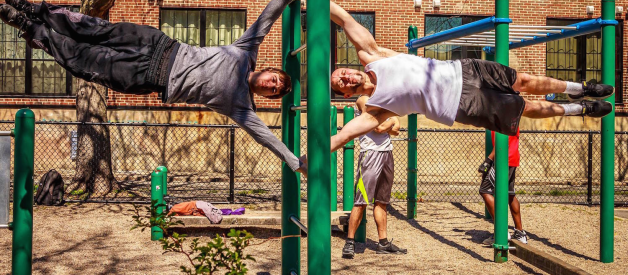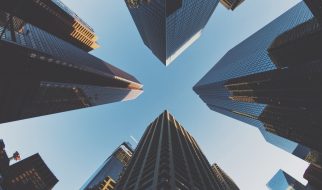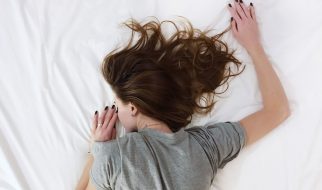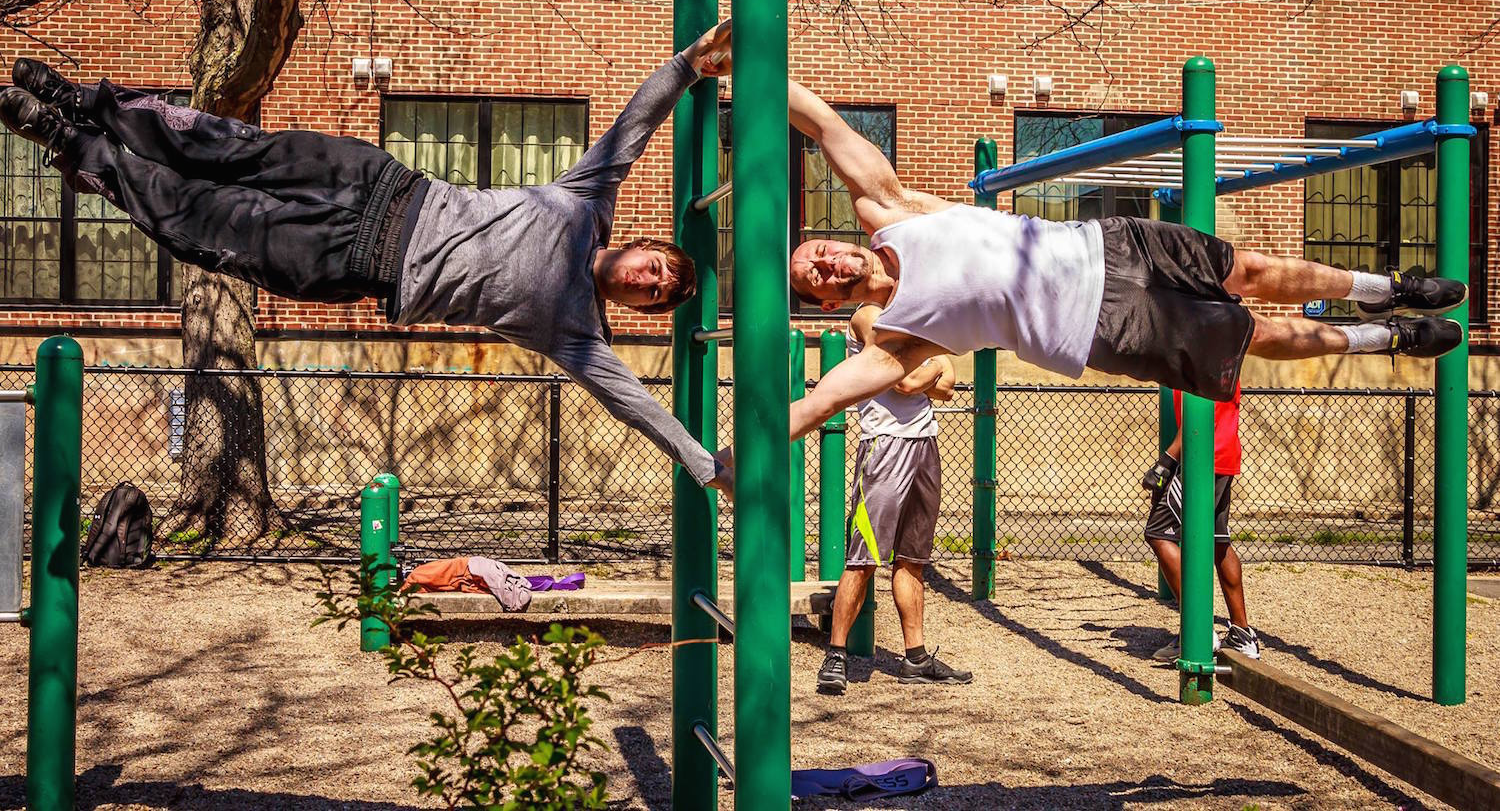 Yours truly on the right. | Photo By: @vlkaiser.photography
Yours truly on the right. | Photo By: @vlkaiser.photography
PROLOGUE
I grew up as a teenager in the ?90s. In terms of fitness, my generation didn?t have YouTube tutorials, Instagram motivation with cute hashtags like #FlexFriday and thousands of fitness blogs to peruse for tips and advice. Our fitness media was relegated to a handful of publications ? FLEX Magazine, Muscle & Fitness, Muscular Development and Men?s Health. The type of exercise regimen we followed was mostly determined by ?bro advice? from guys in our neighborhood that were a bit older than us.
It was a very different world back then.
CrossFit and P90X hadn?t been invented yet. Kettlebells were still known only as ???? (girya in English) because no one outside the East Bloc had heard of them. Yoga was mostly practiced by hippy vegetarians and hadn?t yet been embraced by the broader fitness world. There were no TRX straps at your local gym. No Zumba classes either. As for calisthenics, the term was even less well known than it is now. The few who were familiar with the word associated it with either the military, or for those of a certain age, with JFK?s presidential fitness challenge. Unless you lived in very specific, isolated communities (read: Brooklyn + Santa Monica) then you weren?t exposed to calisthenics. Mainstream fitness culture was mostly based on concepts established in the late ?70s (i.e. ? Arnold?s era) peppered with random fads and gadgets like the Ab Roller and Nordic Track. This was the environment in which my long standing love affair with ?the iron? began.
1996?97: How much you benchin? bro?
I don?t recall the exact moment I first got under a barbell, but at some point during my fifteenth year of life, I began lifting weights. From what I remember, I believe my initial motivation for doing so was a combination of improving my athletic ability for basketball, and like most teenage boys, to build my physique. I quickly fell in love with it and forgot about the basketball part entirely. My life began to revolve around the gym. For the entire duration of my high school years, I lifted weights religiously. I was at the gym six days a week and the longest stretch of time I ever took off was two weeks. Even that was only because I injured my lower back from squatting too much weight. I still remember the training schedule like it was yesterday. Mondays and Thursdays we did chest and arms. Tuesdays and Fridays were back and shoulders. Wednesdays and Saturdays it was legs. Dorian Yates and Flex Wheeler were my heroes and creatine was my afternoon snack. From my freshman year to my senior year, I transformed my body from a 150 pound scrawny boy to a 190+ pound much bigger boy. Along the way, I achieved some impressive feats of strength, including being able to deadlift over 500 pounds and leg press over 1 ton. On the flip side, I also had poor mobility, weak cardio-pulmonary endurance, and I couldn?t even do 10 pull-ups.
I didn?t know any better though.
Remember, it was the ?90s. My ?gym bros? and all my juiced-up heroes in the magazines simply validated my quest to grow ever-increasingly bigger muscles. Little did I know how those years of lifting heavy weights and drinking toxic weight gainer shakes would affect me later on in life. To be fair, the long term effects of that lifestyle didn?t have solely negative consequences. In hindsight, I learned a lot from that time period. Even if there were negative elements to it, overall I don?t regret it. It set the foundation for fitness becoming part of who I am. Were it not for my ?iron addiction?, it?s possible that this would not be the case. These days my training is primarily based on calisthenics, but let me take a step back and tell you how I made that transition first. Oh, and of course the reasons why I made the switch. After all, that?s the title of this article, right?
2013: YouTube. The Human Flag. New York City.
 My favorite picture of me performing a human flag.
My favorite picture of me performing a human flag.
What do those three things have in common with each other? The short answer is that I stumbled upon the world of calisthenics by clicking on a suggested YouTube video of a guy from New York City performing the human flag. It was around 2013 when I first watched that video and I haven?t looked back. The man in the video had an impressive, chiseled physique, but he was performing feats of strength that not only had I never seen before, but that I didn?t even know were possible outside of Olympic level gymnastics. I was completely mesmerized. While I had achieved a similar aesthetic look with my body, I knew that even at the height of my weightlifting prime, I could never have done a human flag or freestanding handstand pushups on top of monkey bars. Watching that video led me down a rabbit hole of more videos, and eventually to completely transitioning into the mastery of oneself (as calisthenics can be so eloquently called).
Perhaps you are here because you are venturing down a similar rabbit hole. Maybe you are considering trying calisthenics or maybe you are just reading this out of curiosity. Whatever your purpose for reading this is, I?m happy to share with you my three main reasons for why I have grown to prefer calisthenics to weight training.
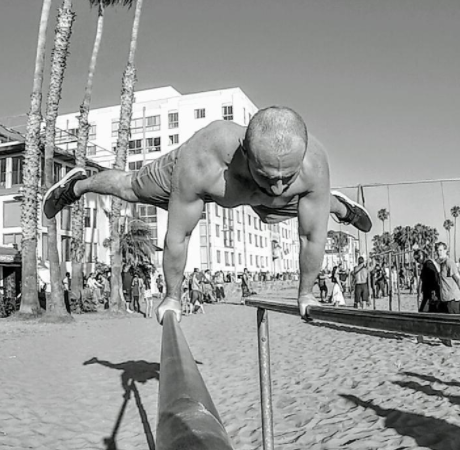 Me at the Original Muscle Beach in Santa Monica.
Me at the Original Muscle Beach in Santa Monica.
Strength Transfer
I?ve seen many gymnasts capable of planche push-ups do double bodyweight bench presses on their first attempts. Conversely, I?ve never seen a weightlifter capable of doing a double bodyweight bench press even come close to a planche push-up initially.
Coach C. Sommer | GymnasticsBodies (1)
Let me pose to you a scenario with two people.
Person (A): Weighs 170 pounds. Bench presses 340 pounds.
Person (B) Weighs 250 pounds. Bench presses 360 pounds.
Which one is stronger?
The correct answer is that it depends.
On what exactly?
On what you are measuring. If you are trying to gauge relative strength, then the first person is stronger because they can bench press twice their bodyweight. If you are looking for maximum strength, then the second person is your top choice because the overall poundage they can lift is greater.
I mention this because it is a frequent debate among proponents of both weightlifting and bodyweight training. The problem is that far too often, individuals in both camps don?t realize that they are actually debating apples and oranges. The reality is that both types of training, when done right, are great. I?m not here to tell you that one is better than the other, because there is no such thing as better. If someone tells me that, then my immediate question is ?better for what??. Each type of training achieves a specific purpose. If you want to be better at weightlifting, then lift weights. If you want to get better at calisthenics, then do calisthenics.
Here is where it gets interesting though.
While doing either type of training will make you better at that type of training more than anything else, doing calisthenics has a greater carryover to weightlifting than weightlifting does to calisthenics. This is particularly true of upper body training.
The quote I referenced from USA Gymnastics Coach C. Sommer alluded to that, but I want you to think about it for yourself for a moment. Let us use the two people from our initial example.

Person (A): Weighs 170 pounds. Training style is calisthenics. Can perform 10 freestanding handstand pushups.
Person (B): Weighs 250 pounds. Trains with weights. Can perform 10 dumbbell shoulder presses with 90 pound dumbbells.
If person (A) were to try to perform those same dumbbell shoulder presses then chances are very high that they would be able to do so. Perhaps they wouldn?t get all 10 repetitions with the 90 pound dumbbells or maybe they could only lift 80 pound ones, but they wouldn?t be drastically incapable of performing the exercise with a respectable weight.
Now let?s take person (B) and have them attempt to do even one freestanding handstand pushup. Not only would they be unable to do it, but they probably couldn?t even do it against a wall. The carryover just isn?t there.
This is for several reasons that I won?t elaborate on in detail here, but the short version is that doing a freestanding handstand pushup requires a much higher degree of body awareness, particularly proprioception. The weightlifter has nowhere near the level of proprioception that the calisthenics person has. There is also a much greater degree of motor unit recruitment involved in the handstand pushup. This is what contributes massively to the strength carryover on the dumbbell presses. (Feel free to Google those terms to learn more about them.)
Old school bodybuilders in Arnold?s heyday were well aware of these principles and utilized them. Schwarzenegger himself was a fan of assisted handstand pushups and did lots of dips and pull-ups as well. His longtime training partner, Franco Columbu could deadlift over 700 pounds, but was also able to hold a front lever on gymnastics rings. These guys were well rounded and understood how calisthenics complemented their weight training. It?s rare to find that nowadays.
To use my self as an example, after I made the transition to bodyweight training, I did strictly calisthenics for approximately two years straight. Excluding the occasional weighted pull-ups and dips, I didn?t touch weights. During that time I had managed to achieve a 15-second back lever hold, a 5-second human flag, 8 consecutive muscle-ups and other skills. One day I decided to test my 1RPM (one rep max) in the bench press just out of curiosity.
I ended up benching 315 pounds!
Considering that I hadn?t performed the exercise in over two years that was pretty impressive. The thing is that I could also do a whole host of other very difficult strength-related things on top of it. Back when I used to lift weights, there was no way I could have done a human flag, a back lever or a muscle-up. Now here I was in my thirties doing all of these cool moves, but still maintaining my ability to move external weight without even practicing it.
I intuitively realized this the first time I watched that human flag YouTube video from New York. I saw the man had a chiseled physique similar to mine, but while he and I both looked fit, there was no way I could do the things he was doing (at the time). The challenge of it was very attractive to me. I wanted to not only look strong, but I wanted to be strong. That kind of strong.
If you need further proof, consider this study done in the Journal of Strength and Conditioning Research. (2)
They took 17 men and randomly assigned them to one of two groups ? a weightlifting-only group and a weightlifting plus plyometric bodyweight exercises group. To be more specific, the first group trained the bench press and squat, while the second group trained those along with plyometric pushups and jump squats. They trained 3 days per week for 8 weeks and at the end of the study, the group that included calisthenics into their training had greater strength increases than the weights-only group in the bench press (11.6% vs. 7.1%, respectively). With the squats, the weights-only group showed a bigger increase in strength, but only by 2%.
This corroborates my point about calisthenics having a greater strength carryover in the realm of upper body training. It?s less true for the legs, although you can certainly develop a powerful and functionally strong lower body by doing exercises like pistol squats, box jumps and sprints. The carryover to heavy squats won?t be to the same degree that upper body calisthenics training has to upper body weightlifting exercises though.
What does all of this mean for you? Well, unless you are an extreme outlier (i.e. ? elite level athlete), as an average fitness enthusiast you will get a lot more bang for your buck doing bodyweight training than lifting weights. You will be able to do virtually all of the things that a weightlifter can do, but on top of that you will reap other benefits that I am about to cover next.
Complete Training + Long Term Health
 Pistol squats require leg strength, but also good balance and exceptional hamstring + ankle flexibility.
Pistol squats require leg strength, but also good balance and exceptional hamstring + ankle flexibility.
When I think back on my my weightlifting days, I recall how much I hated doing any sort of core work. The only real core stimulation I got was from heavy squats and heavy deadlifts because both of those require maximum total-body tension to pull off. That total-body tension includes your core. Other than that, I can say with confidence that doing even 20 sit-ups would have been a struggle. Well fast forward to today and my attitude towards core exercises has not changed. I still hate them.
The difference now is that my core is much stronger and still gets lots of action simply due to the fact that virtually every calisthenics exercise works your core to some degree. When I lifted weights I had the luxury of conveniently neglecting my core at the expense of my lower back and I?m still suffering from the negative effects of that to this day. Again, I don?t regret those days, but had I known what I know now, I?d have a much healthier and more flexible body today.
There are some fundamental concepts you should understand in order to fully grasp why calisthenics results in a more complete form of training.
Some of them I already introduced earlier on. These were proprioception and motor unit recruitment. Another is the difference between open kinetic chain (OKC) exercises and closed kinetic chain (CKC) exercises.
Come again?
Let me explain. When performing an OKC exercise, your body stays still while your limb moves. An example would be a bicep curl. In contrast, when performing a CKC exercise, your limb stays still while your body moves. An example would be a pull-up because your hands don?t move, but your whole body goes up and down.
The more easily digestible explanation of this is that CKC exercises force your body to work as a whole unit, while OKC exercises target one or two specific muscles. Virtually all calisthenics exercises are CKC, which results in a more completely trained body with few, if any, muscle imbalances. You would almost have to go out of your way to create some. The only real way it would happen is if you solely did pulling exercises without doing pushing exercises or vice-versa (or skipped leg day).
With weights, if you don?t have a well thought out training plan, it?s easy to succumb to ?bro science? and work only your beach muscles. While there is nothing wrong with bicep curls and bench pressing per say, if you are mainly (or only) doing those two exercises at the expense of squats, pull-ups and dips, then you can wind up with some serious muscle imbalances, aches and pains down the line, or even a serious injury. This is because most weightlifting exercises, including bench presses and bicep curls, are OKC and don?t require your body to work as a unit. Therefore, it?s much easier to over-train one particular muscle group and under-train another. Much like how I never worked my core because I simply didn?t feel like it. With calisthenics you just can?t do that.
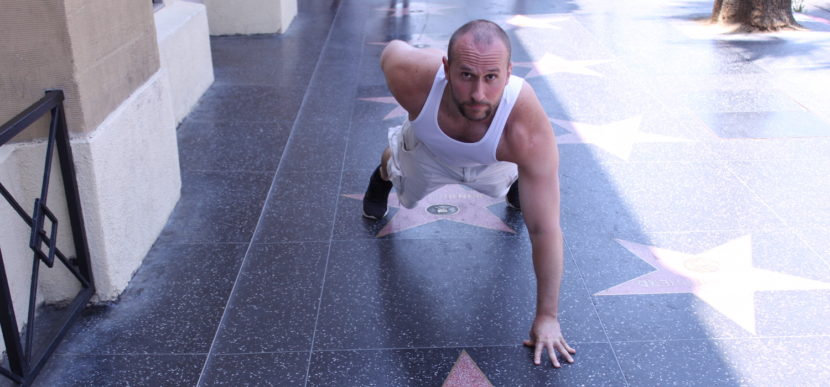 The body must work in harmony to complete a one-arm pushup.
The body must work in harmony to complete a one-arm pushup.
Aside from avoiding muscle imbalances, the other aspect of complete training means being a well-rounded individual who not only has strong muscles, but also has good balance and mobility. That?s in addition to well-developed joints, tendons and ligaments, as well as good-to-excellent muscle endurance.
How is this different from weightlifting?
Well, it?s in the inherent nature of calisthenics. You almost can?t progress further in your calisthenics journey unless you become more well-rounded in your training. Some moves will be impossible to unlock. This is in contrast to weightlifting where you can just keep piling on more weight ? often foolishly ? and cause yourself all sorts of health issues.
Let us take the example of the barbell squat versus the pistol squat.
When working towards the pistol squat, you undoubtedly build some serious unilateral strength in each of your legs. It takes strong quads, hamstrings and glutes to be able to lift up your entire body on only one leg. However, that is not the only aspect you need to improve to unlock the move. You also have to develop good hamstring flexibility and solid ankle dorsiflexion. That?s all rounded out by having good balance on each leg. You simply cannot muscle your way into achieving this move.
Compare this to the barbell squat where you can have poor balance and poor mobility, yet somehow still be able to pull off the exercise to some degree. It might be ugly and your form might be off, but depending on your experience level, you may not even notice. I?d be a wealthy man if I had a dime for the number of people who can?t do a simple, full range of motion ass-to-grass squat with no weight, but for some reason think it?s a good idea to load up their spine with external weights.
In conclusion, with weightlifting it?s easy to skip the foundation. With calisthenics it?s much harder to do that. You simply cannot progress into more difficulty without having a strong base first. That strong base often involves not just strength, but those other elements of fitness that make one a more completely trained athlete. This results in fewer injuries and better long term health as well.
Convenience + Portability
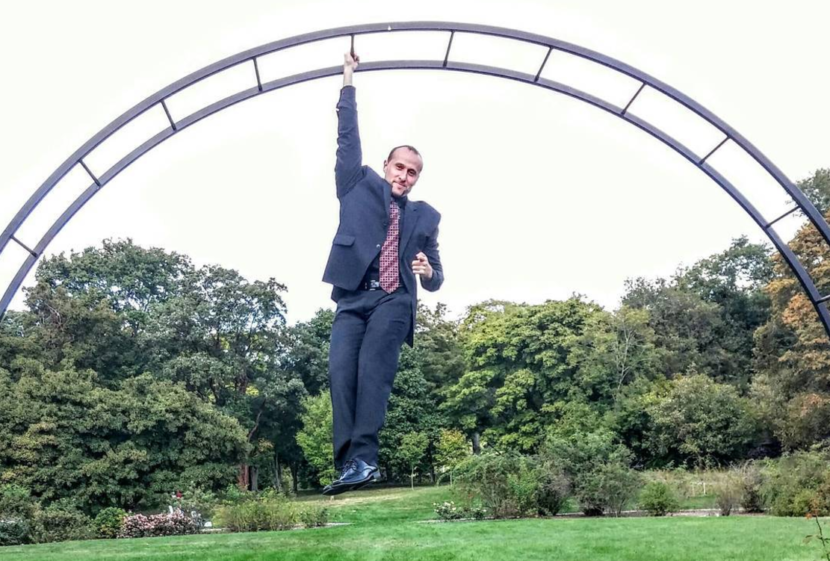 Anytime. Anywhere.
Anytime. Anywhere.
This last reason why I prefer calisthenics to weightlifting is pretty self-explanatory. It?s just way easier to keep up with. I remember as a kid in high school flying to Europe to visit family and freaking out because I wouldn?t have access to a gym. I ended up using my grandmother?s chairs as dumbbells so that I could do lateral raises and bicep curls. I crawled under the bed I was sleeping on so that I could bench press it. In hindsight it was pretty creative, but also completely unnecessary. I could have done handstands against the wall and pushup variations to work most of those same muscle groups.
This unbelievable convenience of using one?s own body as the primary piece of training equipment is extremely liberating. Most times the only thing that?s missing is a good pull-up bar. However, much like with my grandmother?s furniture, I still have a creative side to me that has figured out how to substitute all sorts of things to serve the role of the mighty bar.
I also prefer training outside in the fresh air compared to a stuffy gym with re-used air circulating around. I think it?s healthier and it feels better. The preferred location is of course a ?bar park? with the works ? dip bars, push-up bars, pull-up bars, stall ladders, etc ? but really any place that has some sort of overhead contraption I can hang off of can do the trick. I?ve used outdoor clothing lines recently and tree branches are always a solid choice. It really doesn?t matter when the motto is ?anytime, anywhere?.
EPILOGUE
I grew up as a teenager in the ?90s. That was a long time ago at this point. Much has changed, including the way I train, but one thing is still the same and will continue to be the same ? I?m still training.
If you are new to this lifestyle and are dabbling in a bit of everything, I encourage you to keep doing that until you fall in love with something. It can be weightlifting. It can be calisthenics. It can be CrossFit. It can be modern dance. It can be ice-skating. It can be martial arts. It really doesn?t matter as long as you are moving your body.
My personal favorite fitness author and friend, Danny Kavadlo, said it best:
The best workout is the one you will do.
Thanks for taking the time to read my thoughts.
See you on the next one!
Martin
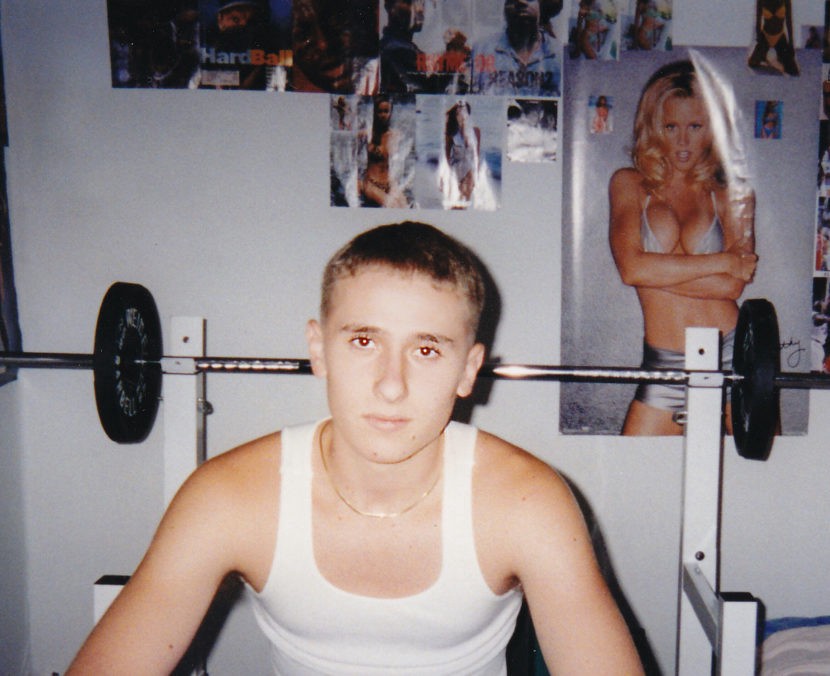 Circa 1997. I didn?t have any muscles yet, but I was determined.
Circa 1997. I didn?t have any muscles yet, but I was determined.
References:
(1) https://www.t-nation.com/training/all-muscle-no-iron
(2) https://www.ncbi.nlm.nih.gov/pubmed/18296966
